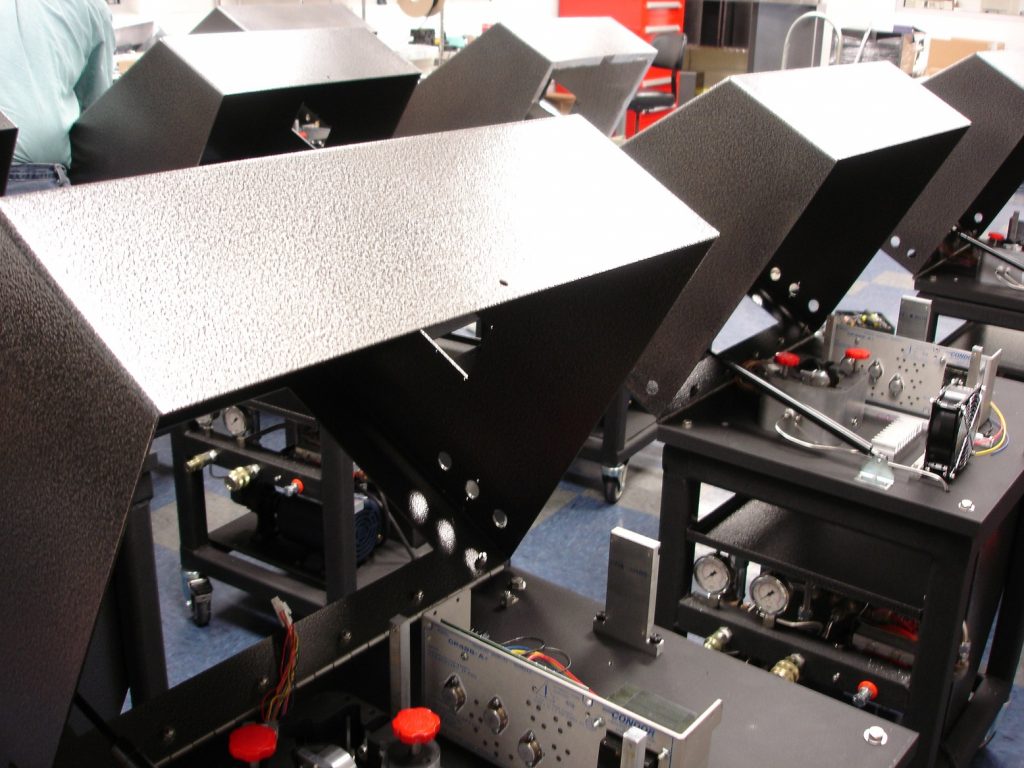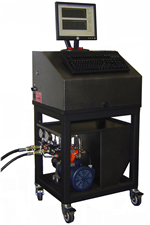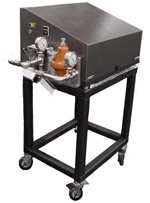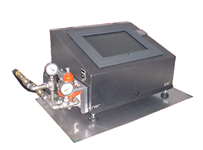Oil soot is a critical diesel engine development parameter due to its negative impact on an engine’s mechanical durability and reliability. In the world of lubrication oil soot measurements on diesel engines, the BTSA saves time and money by compressing 100 to 500-hour tests into a few minutes. The methodology through which this is accomplished requires extreme measurement precision and a very robust continuous oil sampling system. This combination allows engine oil to be continuously circulated from the engine to the instrument and back during measurements. The oil soot is measured with an extremely sensitive optical subsystem that provides fast and precise soot concentration measurements in real time.

A rate is calculated by analyzing the trends associated with the soot accumulation in time. This process is normally accomplished in under 15 minutes. The rate is then translated into a predicted concentration at a specified number of hours, i.e., 100 or 250 hours. Therefore, engine testing for lubricant oil soot can be accomplished in a few minutes instead of weeks or months, saving time and significantly lowering cost.
Moreover, by allowing an engineer to acquire a soot rate in minutes, routine acquisition of entire soot maps can be achieved in a few hours. Today’s engines are equipped with many variable controls, such as VG turbochargers, variable rate EGR, pilot injection, injection rate shaping, expansion cooling, etc., and it is critical to have fast analysis equipment in order to characterize all of the resultant effects in a reasonable amount of time.
The BTSA utilizes an integral pump that circulates the oil from and back to the engine during engine operation. A small amount of that oil is routed through a sample conditioning system and then into an optical module where it is analyzed for the soot concentration. This concentration is accurately measured with precision approaching 0.0001% by weight, and this process is repeated each 6 seconds. As soot accumulates in the oil during engine operation, the measurement precision is sufficient to generate smooth and reproducible accumulation trends that allow accurate predictions over hundreds of hours to be calculated.
This capability enables an engineer to acquire soot rates in about the same amount of time that is normally taken for steady state emissions, performance and fuel measurements. The BTSA has proven to be an essential tool for comprehensive product development.
What Is Lubricant Oil Soot?
Lubricant soot is a by-product of diesel combustion. Soot is formed in fuel-rich, cool regions of the combustion chamber and impinges on the cylinder wall, where it is scraped into the engine oil sump by the piston rings. Soot is partially burnt fuel which results in a heterocyclic hydrocarbon particle.

Upon entering the engine oil sump, the soot is rapidly mixed in with the bulk oil and circulates throughout the engine. As oil passes through the engine gears, the soot particles are ground into extremely fine particles, nominally 1000 Angstroms, and are maintained in suspension by the lubricant dispersants.
The soot will remain homogeneously suspended in the oil, until the soot concentration reaches a level great enough that it precipitates out of the oil. This may also result in filter plugging. Oil formulations which have high dispersancy levels will keep the soot in suspension to higher concentration levels.
Soot is a non-classical abrasive. It will erode boundary lubricated surfaces at high concentrations. This will cause severe engine wear. Some symptoms of soot induced wear include tappet polishing, cam lobe wear, rocker/crosshead wear and ring wear at top and bottom reversal locations.
Revision History

Produced 2004-present

Produced 2003-2004

Produced 2001-2003

Produced 1997-2001
